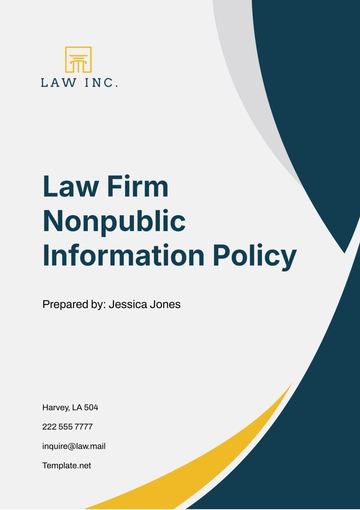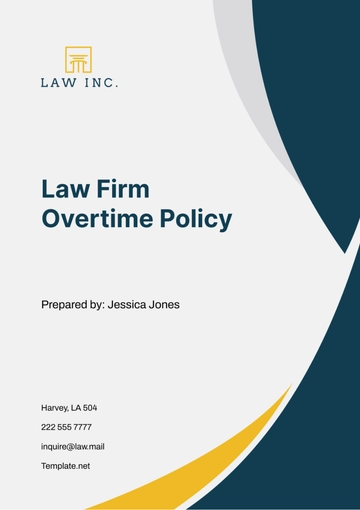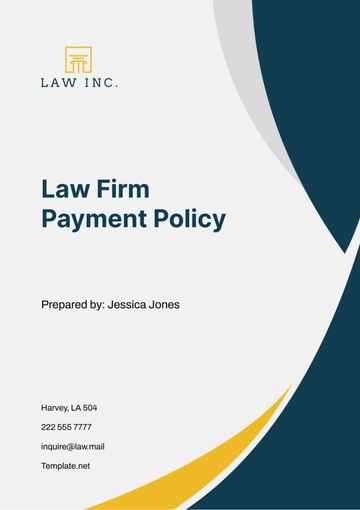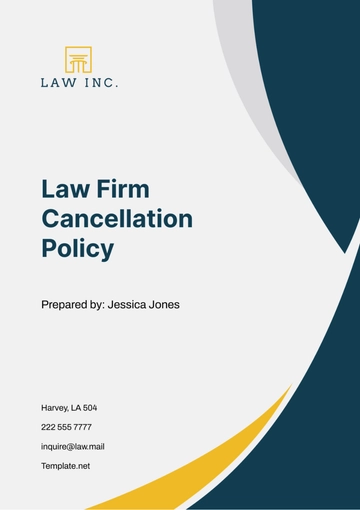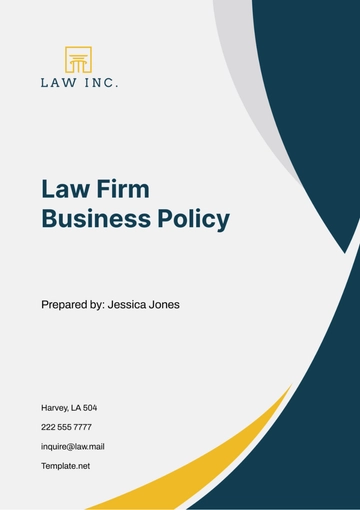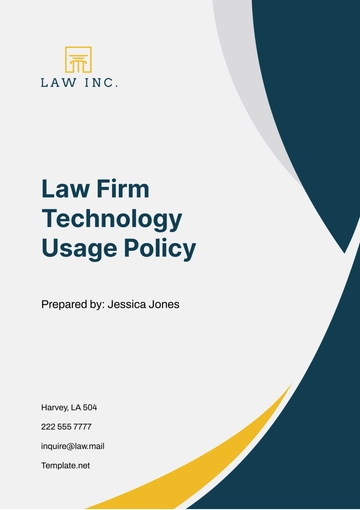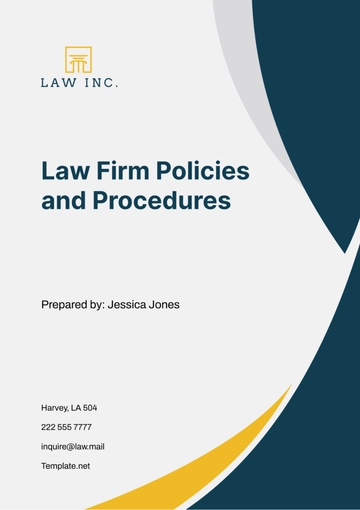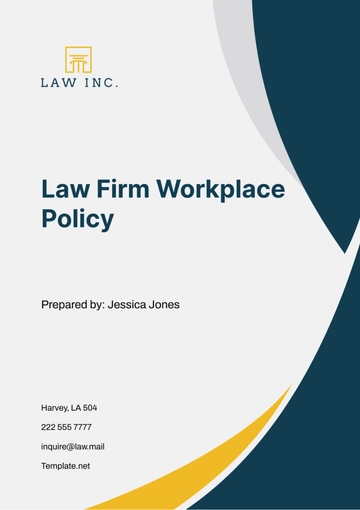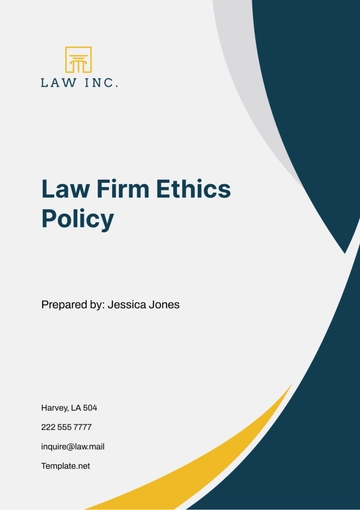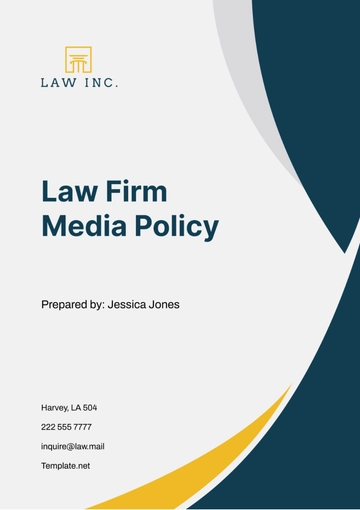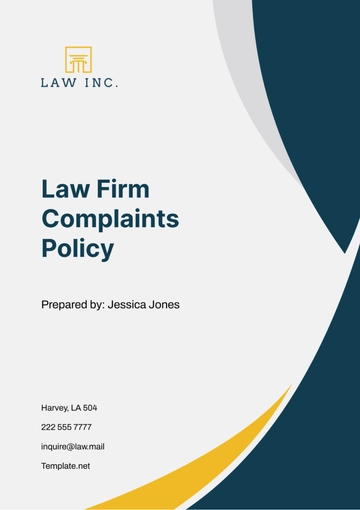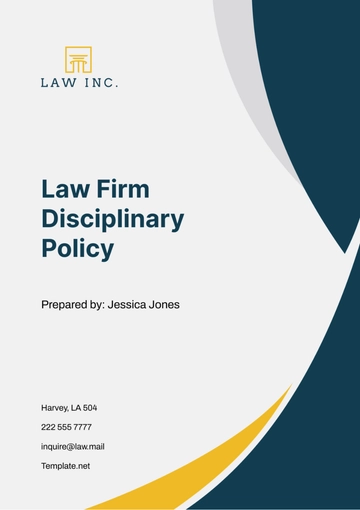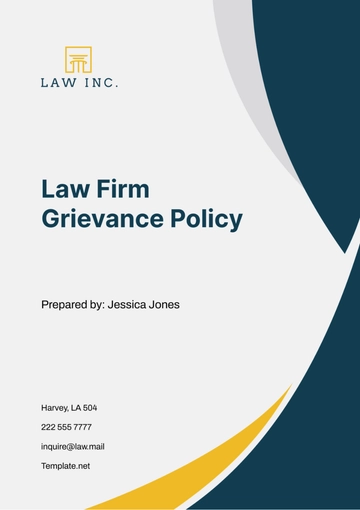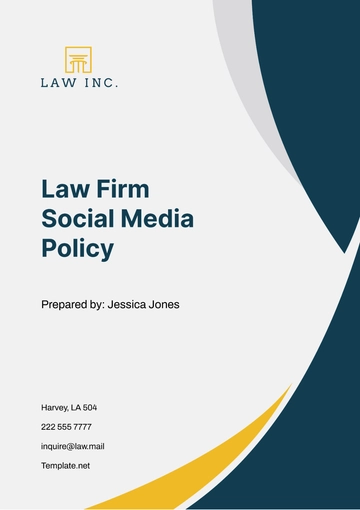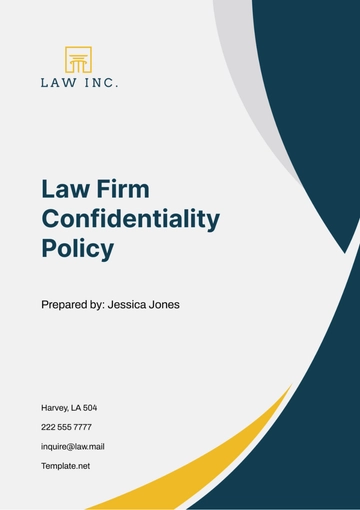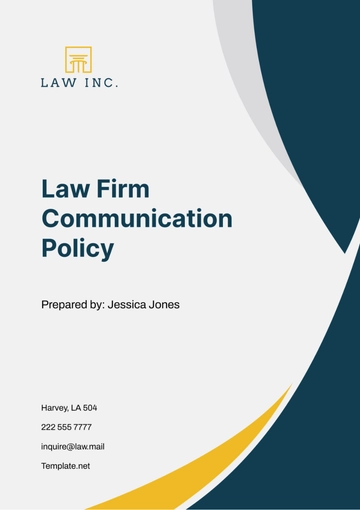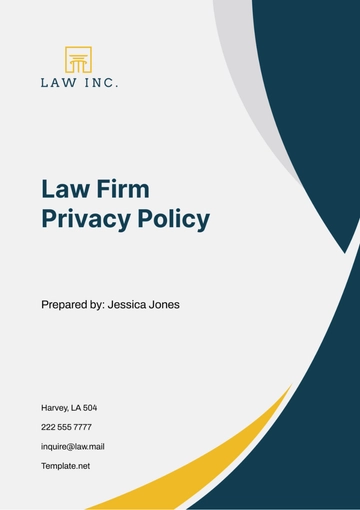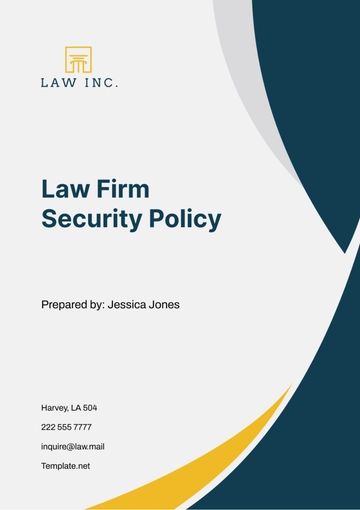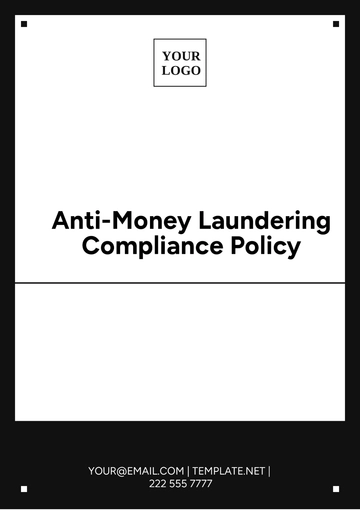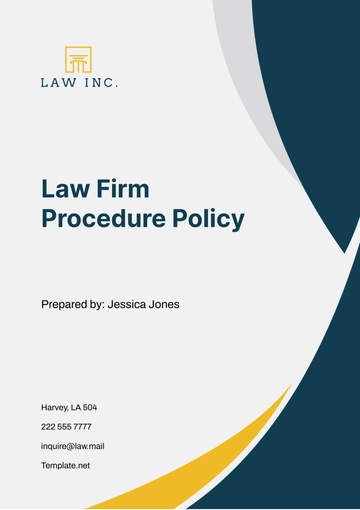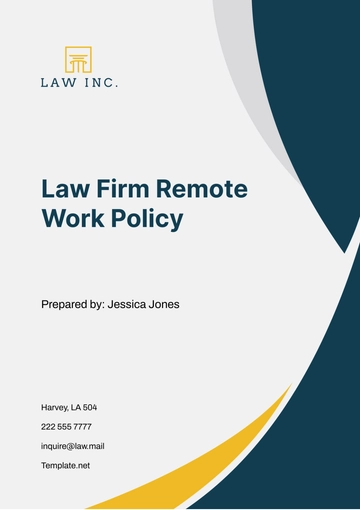Free Legal Employment & Labor Vacation Policy
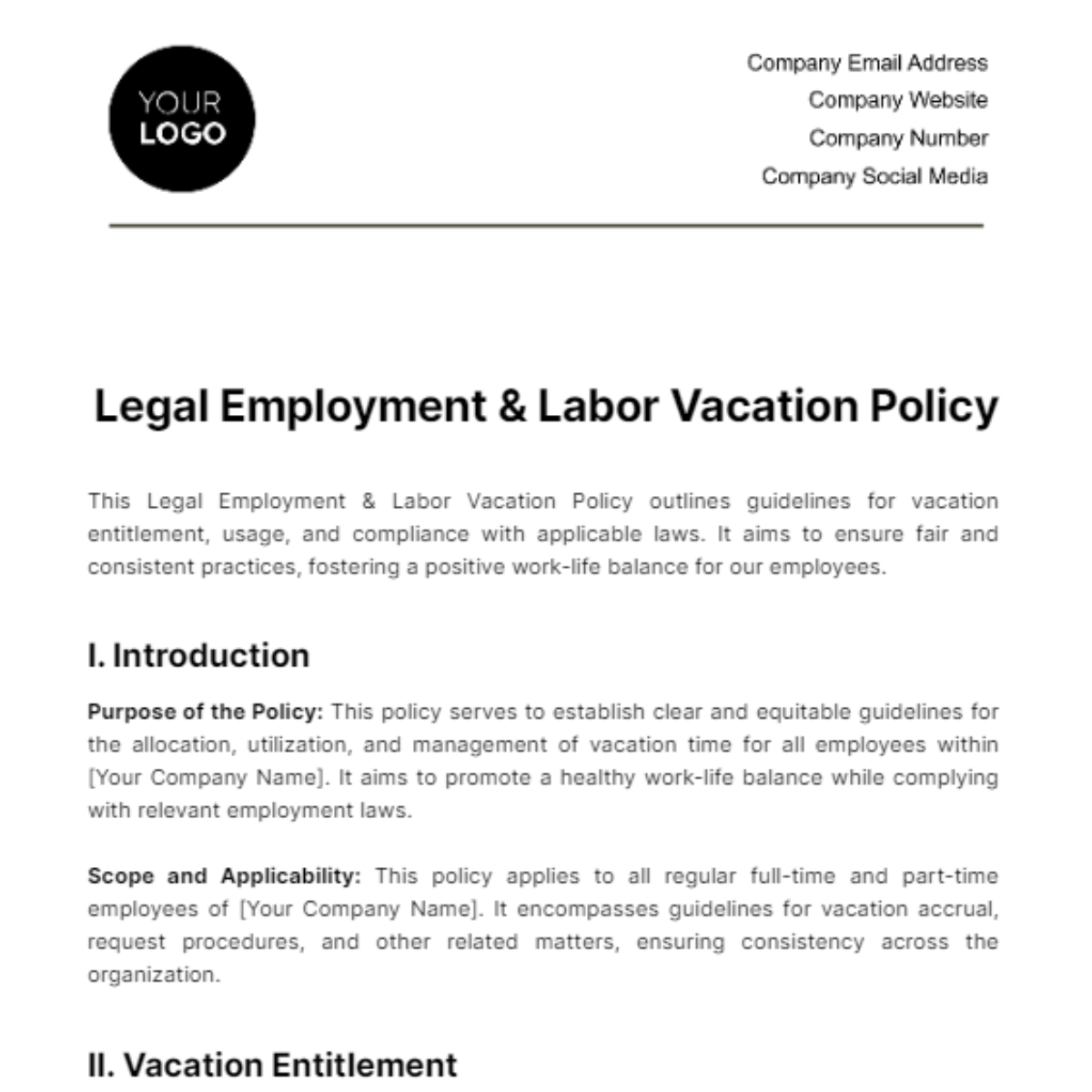
This Legal Employment & Labor Vacation Policy outlines guidelines for vacation entitlement, usage, and compliance with applicable laws. It aims to ensure fair and consistent practices, fostering a positive work-life balance for our employees.
I. Introduction
Purpose of the Policy: This policy serves to establish clear and equitable guidelines for the allocation, utilization, and management of vacation time for all employees within [Your Company Name]. It aims to promote a healthy work-life balance while complying with relevant employment laws.
Scope and Applicability: This policy applies to all regular full-time and part-time employees of [Your Company Name]. It encompasses guidelines for vacation accrual, request procedures, and other related matters, ensuring consistency across the organization.
II. Vacation Entitlement
Accrual Method: Vacation time accrues on a bi-weekly basis, with the accrual rate based on years of service. For example, employees with less than one year of service accrue 0.0385 hours of vacation time per hour worked, while employees with one to five years of service accrue 0.0462 hours per hour worked.
Calculation of Vacation Time: Vacation time is calculated based on the employee's years of service as follows:
Less than one year: 80 hours per year
1-5 years: 120 hours per year
6-10 years: 160 hours per year
10+ years: 200 hours per year
III. Vacation Request Process
Procedure for Requesting Vacation Time: Employees must submit vacation requests through the company's online portal at least two weeks in advance. The request should include the desired dates, purpose, and any pertinent details.
Notice Requirements: Employees are required to provide a minimum of two weeks' notice for vacation requests, except in cases of emergency or unforeseen circumstances where shorter notice may be accepted.
IV. Vacation Usage
Permitted Use of Vacation Time: Vacation time can be used for personal, recreational, or family reasons without the need to disclose specific details. It is intended to provide employees with flexibility in managing their time away from work.
Restrictions on Vacation Time Usage: Vacation time cannot be used during blackout periods, which typically include the last week of the fiscal year and other high-demand periods. Employees will be notified of blackout dates in advance.
V. Carryover and Payout
Carryover Policy: Up to 40 hours of unused vacation time may be carried over to the following year. Any excess hours will be forfeited unless otherwise approved by management.
Payout Upon Termination: Upon termination, employees will be entitled to a payout for any accrued but unused vacation time based on their current hourly rate and the number of hours accrued.
VI. Compliance with Laws and Regulations
Federal, State, and Local Laws: This policy complies with all relevant federal, state, and local employment laws, including minimum vacation entitlements. Employees are entitled to the greater of the vacation time provided in this policy or the minimum required by law.
Minimum Vacation Entitlements: Employees are entitled to a minimum of 80 hours of vacation time per year, consistent with the requirements of state labor laws.
VII. Benefits and Restrictions
Additional Benefits Tied to Vacation Time: In addition to vacation time, employees are eligible for paid holidays, including New Year's Day, Memorial Day, Independence Day, Labor Day, Thanksgiving Day, and Christmas Day.
Limitations on Vacation Time Usage: To ensure adequate staffing levels, only a certain number of employees may be on vacation at any given time. Management will determine staffing needs and may limit the number of concurrent vacation requests.
VIII. Communication and Documentation
Communication of the Policy: This policy is communicated to all employees during onboarding and is available in the employee handbook, which is accessible through the company intranet.
Documentation Requirements: Employees are responsible for accurately recording their vacation time in the company's time-tracking system. Any discrepancies should be reported to HR for resolution.
IX. Exceptions and Special Circumstances
Medical Leave: Employees requiring medical leave must submit appropriate documentation from a healthcare provider to support their request. Management will review the documentation and determine eligibility for medical leave.
Bereavement Leave: Bereavement leave is available to employees in the event of the death of an immediate family member, as defined in the company's bereavement leave policy. Employees must notify their supervisor and provide documentation as requested.
X. Dispute Resolution
Procedure for Resolving Disputes: Any disputes regarding vacation time or the application of this policy should be reported to HR for resolution. HR will investigate the matter and work with the employee and management to find a satisfactory resolution.
Escalation Process: If a resolution cannot be reached at the HR level, the matter may be escalated to senior management for further review and consideration.
XI. Policy Review and Updates
Review Frequency: This policy is reviewed annually by HR to ensure compliance with applicable laws and alignment with company practices. Updates may be made as necessary to reflect changes in legislation or company policy.
Process for Updating the Policy: Proposed updates to the policy are reviewed by HR and legal counsel before being communicated to employees. Employees are encouraged to provide feedback on proposed changes during the review process.
XII. Implementation and Enforcement
Responsibility of HR: HR is responsible for implementing and enforcing this policy. HR will provide training and guidance to employees and management on the proper application of the policy.
Consequences of Policy Violations: Violations of this policy may result in disciplinary action, up to and including termination of employment, depending on the severity and frequency of the violation. Consistent enforcement ensures fairness and accountability in the workplace.
XIII. Definitions
Key Terms Used in the Policy
To facilitate understanding, key terms used in this policy are defined as follows:
Vacation Accrual Schedule: The document outlining the rate and method by which vacation time accrues for employees, typically based on factors such as years of service or employment status. (Example: The Vacation Accrual Schedule specifies that employees accrue vacation time at a rate of 0.0385 hours per hour worked, up to a maximum of 120 hours per year.)
Bereavement Leave Policy: The policy governing the procedures and entitlements for employees who require time off due to the death of a family member or loved one. (Example: According to the Bereavement Leave Policy, employees are entitled to up to three days of paid leave for the death of an immediate family member, as defined in the policy.)
Definitions Section: The section within this policy document where key terms used throughout the document are explicitly defined for clarity and reference. (Example: Refer to the Definitions Section for clarification on terms such as "accrual," "forfeiture," and "blackout periods.")
- 100% Customizable, free editor
- Access 1 Million+ Templates, photo’s & graphics
- Download or share as a template
- Click and replace photos, graphics, text, backgrounds
- Resize, crop, AI write & more
- Access advanced editor
Discover the ultimate solution for crafting a comprehensive Legal Employment & Labor Vacation Policy with Template.net's editable and customizable template. Seamlessly tailor policies to your organization's needs using our intuitive AI Editor Tool. Ensure compliance with employment laws while fostering work-life balance. Elevate your HR practices with a template designed for efficiency and clarity.
You may also like
- HR Policy
- Restaurant Policy
- Company Policy
- Accounting Policies and Procedures
- Website Policy
- Privacy Policy
- Safety Policy
- School Policy
- IT and Software Policy
- Law Firm Policy
- Construction Policy
- Interior Design Policy
- Travel Agency Policy
- Education Academic Policy
- Security Policy
- Real Estate Policy
- Expense Policy
- Software Policy
